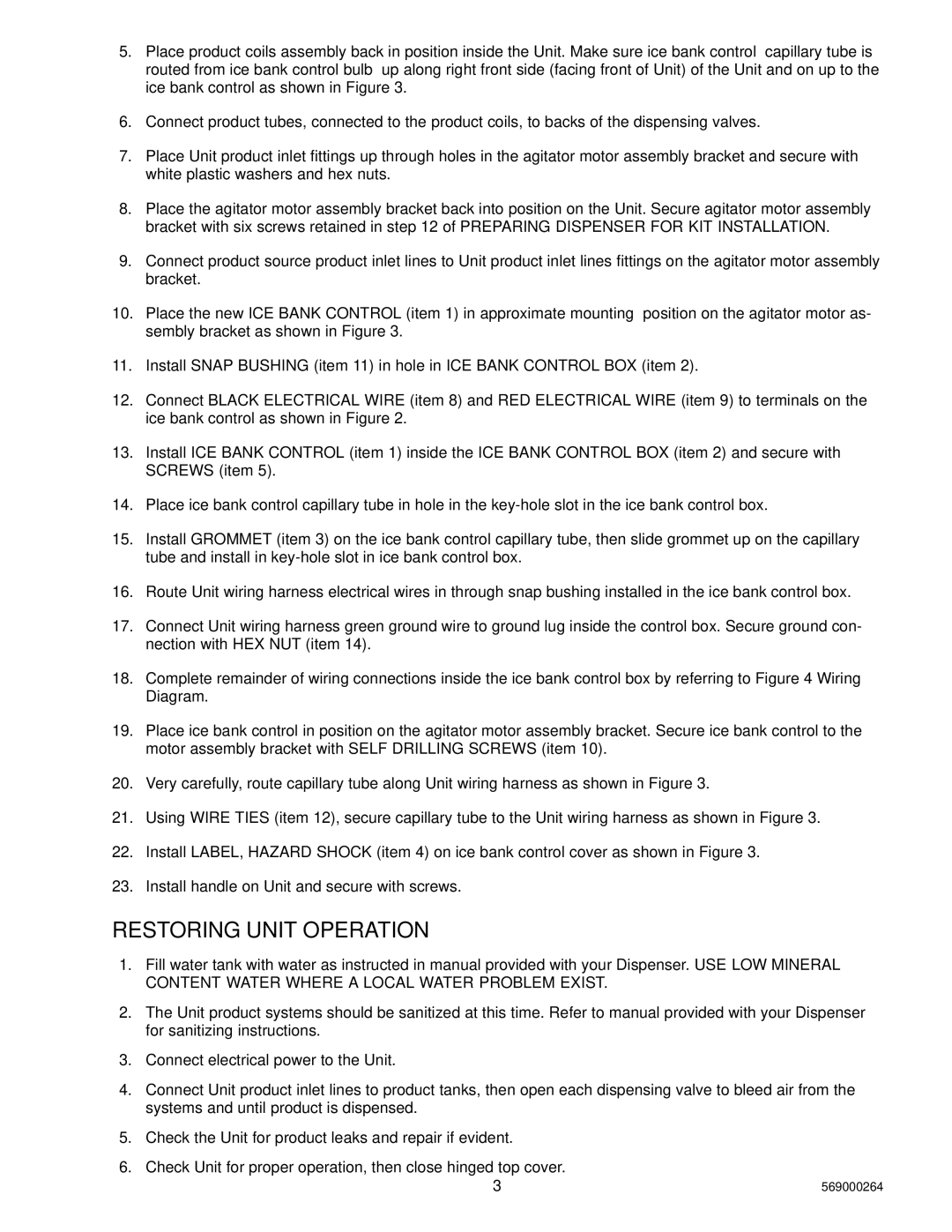2849959020, 2849949020, 2849949200, 2849959200 specifications
Cornelius 2849959200, 2849949200, 2849949020, and 2849959020 represent a series of innovative liquid dispensing solutions designed to meet the diverse needs of various industries, including beverage, healthcare, and foodservice. These models are distinguished by their advanced features, cutting-edge technologies, and user-centered design characteristics that enhance efficiency, reliability, and usability.One of the main features of the Cornelius dispensing systems is their modular design, which allows for easy customization and adaptation to different requirements. This flexibility means that operations can tailor the dispensing unit to accommodate various beverages, products, or applications. The systems can be configured with multiple output options, enabling simultaneous dispensing of diverse liquids without compromising accuracy or speed.
The technological advancements embedded in the Cornelius models include integrated electronic control systems that automate the dispensing process. These systems consist of user-friendly interfaces, allowing operators to program specific dispensing volumes and adjust settings with ease. Enhanced accuracy is achieved through precise flow control mechanisms, ensuring that every portion dispensed is consistent and reliable.
Another notable characteristic is the high-quality construction of the Cornelius models, which utilizes durable materials to withstand the rigors of commercial and industrial use. Components are designed for easy cleaning and maintenance, reducing downtime and improving operational efficiency. The systems also prioritize hygiene with features that minimize contamination risks, making them suitable for environments where sanitation is paramount.
In terms of connectivity, the Cornelius systems can be equipped with smart technology capabilities, allowing for remote monitoring and diagnostics. This feature enables operators to track performance metrics, perform troubleshooting, and make informed decisions to optimize operations.
Compatibility with various types of beverage containers and adaptability to different locations further enhance the appeal of the Cornelius models. Whether in a bustling restaurant or a high-capacity production facility, these dispensers are engineered to meet the demands of a wide range of users.
Overall, the Cornelius series exemplifies the intersection of innovative technology and practical design, offering solutions that cater not only to operational efficiency but also to the evolving needs of modern industries. As such, they represent a significant advancement in liquid dispensing technology, promising enhanced performance for years to come.
